Understanding basic hiking techniques and gaining some experience with them before your journey on the Camino de Santiago will make for a more pleasant, pain-free trip. So here are 5 simple points to consider and practice, that will aid you on your Camino.
1. Pace and Rhythm
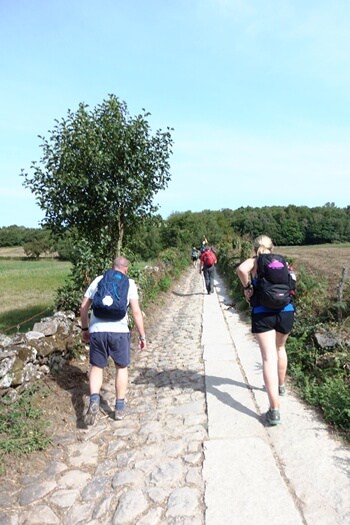
Aim for a consistent pace throughout the day. It’s easy to start the day full of energy and in high gear only to flag in the afternoon and have your pace drop by half. As with cars, slowing down and speeding up uses more energy than maintaining a steady pace.
Maintain a steady rhythm and keep your stride consistent. Things like singing a song, observing your breath, or walking with poles can help to set and maintain a steady rhythm. A consistent stride reduces energy usage but can vary in length depending on the gradient. Shorten your stride when going up or down hills to maintain balance and lengthen it on flat ground. With practice, these hiking techniques become easier and then become second nature. A good Camino training plan will help you build up your walking and hiking experience for your Camino.
2. Using Hiking Poles

Hiking poles are useful for helping you keep a consistent rhythm while walking and for maintaining balance on steep descents or uneven terrain. When used properly, they also can help lessen the impact that walking places on the joints and can transfer some of the efforts of walking from the legs to the upper body.
Adjust your walking poles to the correct length for your height. Poles should be long enough so that your elbow is bent at a 90-degree angle when the pole is in a vertical position. This will mean making the poles slightly shorter for steep uphill grades and slightly longer for steep downhill grades.
When you step forward, plant the pole in the opposite hand at an angle pointing behind you. Push off with the pole as you move forward and plant the alternate pole as you land your other foot. With a little practice, this motion will settle into a natural rhythm. The poles should be planted slightly ahead of the foot when going down hills to aid in balance and to absorb some of the stress of impact.
Inspired? Download Our Camino Packing List!
Everything you need to pack to walk the Camino de Santiago.
Download3. Going Up Hills
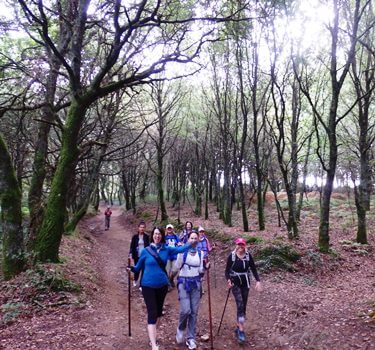
One of the most intimidating things for novice hikers is the long, steep climb. The Camino Primitivo route can have steeper climbs, but with proper hiking techniques, the strenuous uphill doesn’t have to be a slog. The main things to remember are pacing, poles, planning, positivity, and the all-important rest step.
As you’re climbing, maintain a steady pace. Pushing quickly up a mountain and then stopping repeatedly to catch your breath wastes a lot of energy. Keep the pace steady but shorten your steps to accommodate the increase in gradient. Plant your poles hard and push yourself up with each step. Make those arms pull their weight rather than just hanging there at your side.
A little planning goes a long way to subtly ease the burn. Make some adjustments to your pack such as loosening your hip and chest straps slightly to aid your stride and breathing. Look ahead at the terrain and pick your path. Roads on mountains are built with switchbacks for a reason: a longer path over the same elevation gain means a lower gradient. It may look a little silly, but zigzag around if the going gets too steep.
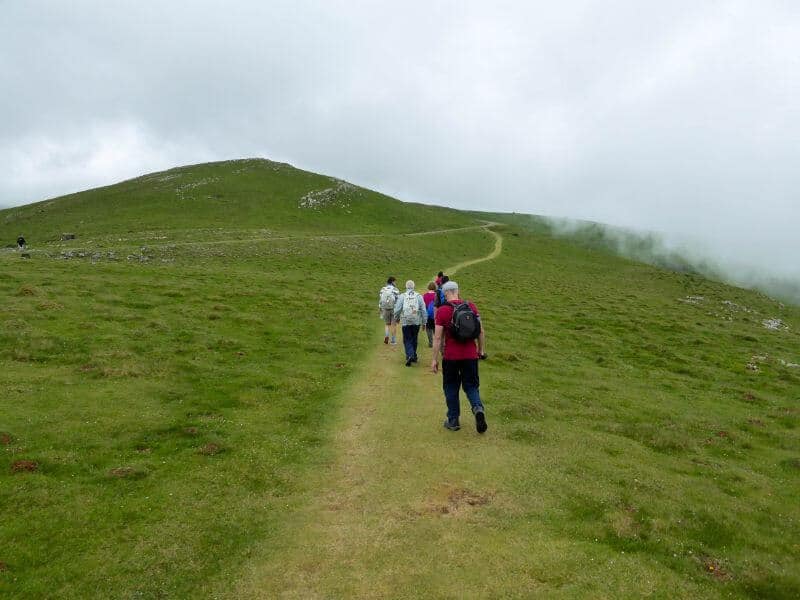
When walking, your leg muscles are in constant motion which means they don’t get a chance to rest until you stop moving. Although this isn’t such a problem on flat surfaces, you can quickly start to feel the burn when the going gets steep. Try the rest step described below, and this may become one of your favourite hiking techniques. This little trick is barely noticeable at a quick pace but will keep you powering ahead when the youngsters who zipped past you are gasping for breath with legs that are turning to jelly.
As you step forward, lock the knee of your back leg so that the front foot isn’t bearing weight as it lands. This locking of the knee aids in balance and transfers the job of maintaining your weight to the skeletal system thereby giving your muscles a short rest. Next, shift your weight to your front foot as you step forward and again lock your back knee. The amount of time you maintain this lock is dependent on a gradient, elevation, and how fatigued you are. It can be anything as little as half a second thereby not appreciably slowing your pace.
4. Going Down Hills
Logic would imply that going downhill is the easy part. However, downhill can be as difficult as up and require a different set of hiking techniques with regard to comfort, balance, and pole placement.
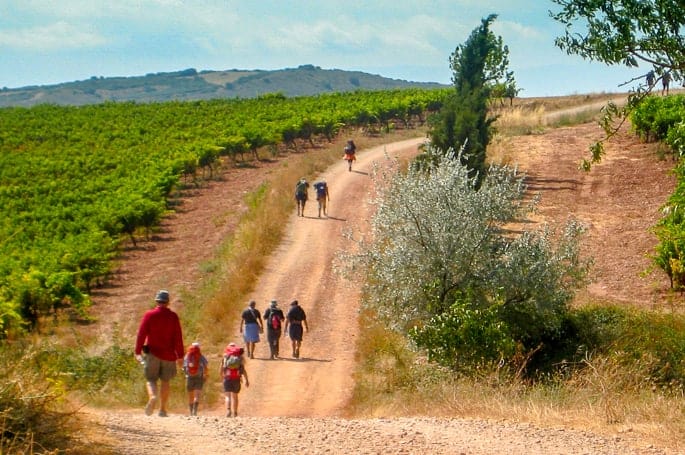
There are a number of hiking techniques you can use to help maintain your balance when going downhills. Tighten your hip belt slightly to minimise pack movement which can destabilise you. Watch your foot placement, particularly with regard to loose rocks which may move when your foot comes down on them. Don’t lean forward. Keep your centre of gravity slightly back and over your legs. Take small steps and plant your pole slightly ahead of your foot to help maintain balance and to take some of the impacts off of your joints.
If you have bad knees, steep downhills can be especially tricky so poles are your best friend here.
Before you start down a steep hill, tighten up your boot laces slightly. This will keep the feet from sliding forward and jamming your toes against the end of the boots. And have a bit of fun zigzagging your way to the bottom!
5. The Mental Game

Let’s face it. Sometimes long-distance walking isn’t fun. You’re tired, hungry, hot, sweaty. Or cold and wet and muddy. You’re 5 kilometres from your bed for the night. You have blisters, or sunburn, or a dodgy knee. ‘Why am I doing this?’ you ask.
This is when a bit of positivity is crucial. It’s time to sing a song, listen to some music, get into a meditative state of mind while repeating your favourite mantra. Focus on your breathing and the flow of air in and out of your body. Distract yourself with some stimulating conversation or podcasts about anything other than pain, fatigue, hunger, dampness, cold, or heat. Observe your surroundings and practice a spot of gratitude, if only for the bed that’s just down the trail!
If hiking caught your eye, go check out the interview with Keith Foskett: Long-distance Hiker and Author to find out more about it and how it could change your life forever!
Let us make your Camino special
Follow the Camino has been helping people from all over the world to experience the Way their own way since 2006. We offer a wide range of flexible and convenient services – from hand-picked accommodation to bag transfers and route notes. Our active travel experts love the Camino and have an extraordinary amount of experience and knowledge to share. Let us make your Camino worry-free and special with our flexible bookings and 24/7 support.
Take the first step on your Camino de Santiago by requesting a free quote!
We hope to see you on the Way soon!



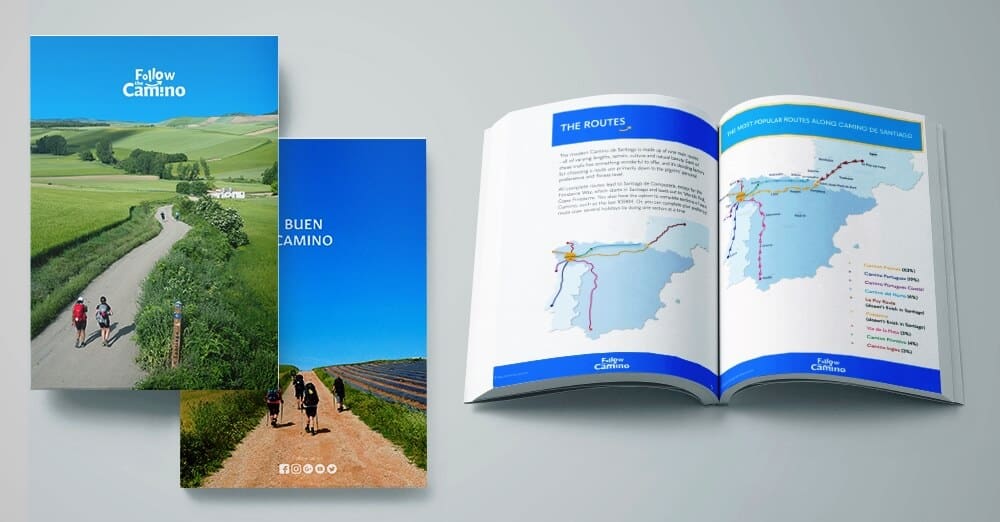

 Flexible itineraries
Flexible itineraries  Luggage transfers
Luggage transfers  Private rooms & bathrooms
Private rooms & bathrooms